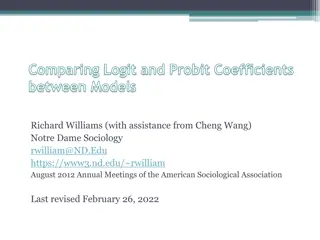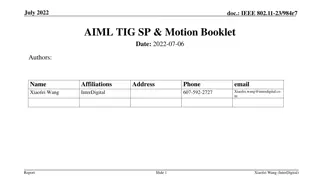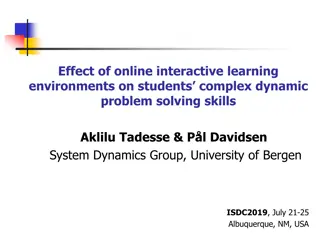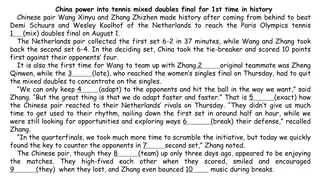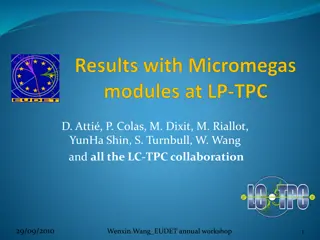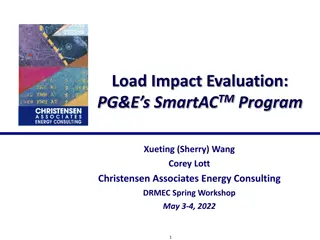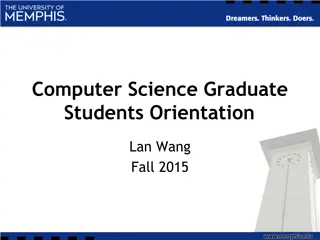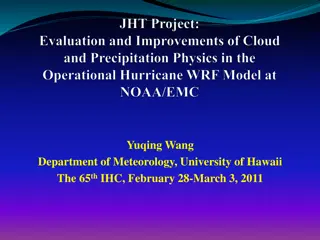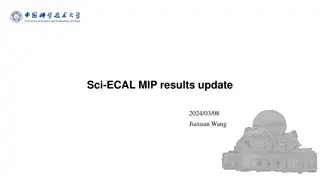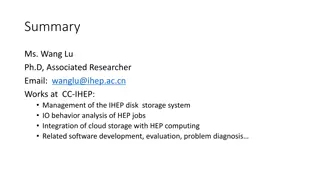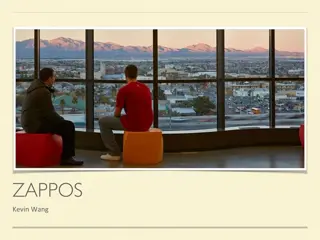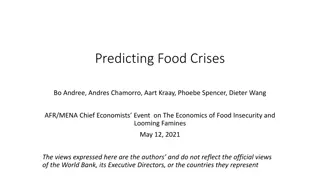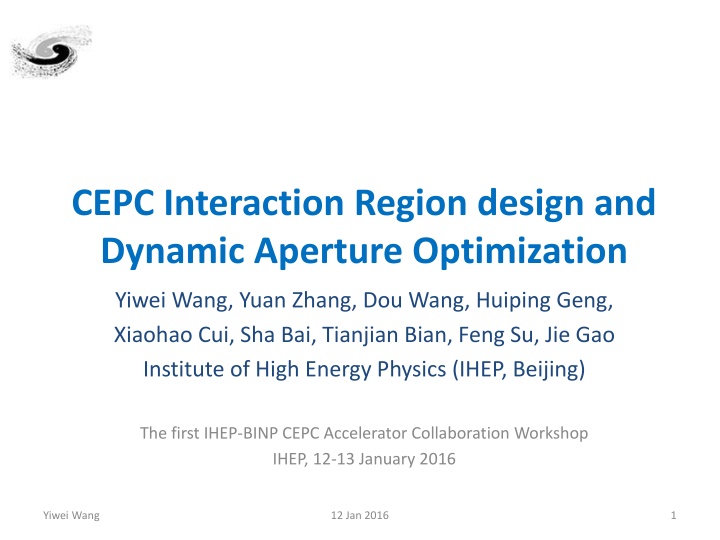
Interaction Region Design and Dynamic Aperture Optimization at CEPC
Explore the lattice design and optimization of the interaction region at the CEPC accelerator, focusing on dynamic aperture, nonlinearity, and chromaticity correction. Learn about the challenges and solutions in maximizing performance and stability for high-energy physics experiments.
Download Presentation

Please find below an Image/Link to download the presentation.
The content on the website is provided AS IS for your information and personal use only. It may not be sold, licensed, or shared on other websites without obtaining consent from the author. If you encounter any issues during the download, it is possible that the publisher has removed the file from their server.
You are allowed to download the files provided on this website for personal or commercial use, subject to the condition that they are used lawfully. All files are the property of their respective owners.
The content on the website is provided AS IS for your information and personal use only. It may not be sold, licensed, or shared on other websites without obtaining consent from the author.
E N D
Presentation Transcript
CEPC Interaction Region design and Dynamic Aperture Optimization Yiwei Wang, Yuan Zhang, Dou Wang, Huiping Geng, Xiaohao Cui, Sha Bai, Tianjian Bian, Feng Su, Jie Gao Institute of High Energy Physics (IHEP, Beijing) The first IHEP-BINP CEPC Accelerator Collaboration Workshop IHEP, 12-13 January 2016 Yiwei Wang 12 Jan 2016 1
Outline Lattice design of the interaction region Optimization of the interaction region nonlinearity Summary Yiwei Wang 12 Jan 2016 2
Lattice of interaction region IR lattice design with local chromaticity correction with x*=0.8m, y*=3mm, x=6.12nm, =0.3%, L*=1.5m, 2IPs latest lattice for head-on collision: FFS_3.0mm_v3.0_Nov_2015 IP FT CCY CCX MT L*= 1.5m y*= 3mm GQD0= -300T/m GQF1= 300T/m -I -I Yiwei Wang 12 Jan 2016 3
Lattice of interaction region Dynamic aperture of whole ring is limited by the strong nonlinearity of IR due to small y* An example: DA with only ARC vs. DA with ARC + preliminary IR Optimization of the dynamic aperture Local correction: optimization of IR nonlinearity Global correction: with help of ARC (see Yuan Zhang s talk) W/ ARC (20140930 by Huiping Geng) W/ ARC+IR (FFS_3.0mm_v0_Feb_2015 Yiwei Wang) 2% (1.5 x , 13.5 y) without radiation damping, error of the magnets, synchrotron motion included Tracking with 3 times of damping time, Coupling factor =0.003 for emitty
Finite length effect of sextupoles Add additional sextupoles next to the main one* Compensate the finite length effect (Lsext=0.3m) *A.Bogomyagkov et al. http://arxiv.org/abs/0909.4872 k=1, S1/S2=-0.1 Yiwei Wang 12 Jan 2016 5
High order chromaticity remove 2 quads in FT# tune phase of sextupoles# FFS_3.0mm_v1.0_Mar_2015 # Yunhai Cai, private communication. K. Oide, SLAC-PUB-4806, Nov 1988. additional sext at 1st image point* *K. Oide, SLAC-PUB-4806, Nov 1988. R. Brinkmann, DESY M-90-14, Nov 1990. FFS_3.0mm_v2.2_Sep_2015 Yiwei Wang 12 Jan 2016 6
High order chromaticity (cont.) Tune shift due to energy deviation v1.0 v2.2 IR only, from IP to the entrance of FFS IR + ARC, periodic solution Yiwei Wang 12 Jan 2016 7
High order chromaticity (cont.) Vertical dynamic aperture vs. dp/p From v1.0 -> v2.2: DA increased significantly for large off-momentum 20 y for 2% (green line) W/O error of the magnets Synchrotron motion included Tracking with 3 times of damping time Coupling factor =0.003 for y x0=0.001 x -2 -1 0 1 2 Yiwei Wang 14-15 Sep 2015 8
High order chromaticity (cont.) Dynamic aperture for both planes v2.2: on momentum (20 x, 180 y), off momentum 2% (2.5 x , 20 y) v1.0 v2.2 Yiwei Wang 12 Jan 2016 9
-I break down and high order dispersion Many additional sextupoles in IR Idea from linear collider final focus* Six more sextupoles (3,4,5,8,9,10) to correct break down of I transformation Three more sextupoles (2,6,7) help to correct the second order dispersion and so on *R. Brinkmann, DESY M-90-14, Nov 1990. FT CCY CCX MT IP L*=1.5m y*=3mm 1 2 3 4 5 6 7 8 9 10 -I -I FFS_3.0mm_v3.0_Nov_2015 Yiwei Wang 12 Jan 2016 10
-I break down and high order dispersion (cont.) In practice, dynamic aperture is optimized directly with the additional sextupoles in IR W/O error of the magnets Synchrotron motion included Tracking with ~1 times of damping time Coupling factor =0.003 for y Downhill simplex algorithm used* 19 points of dp/p from -2% to 2% Optimize with initial phases (phasex, phasey)=(0,0),(pi/2, pi/2), (0, pi/2), (pi/2, 0) *K. Oide, private communication Yiwei Wang 12 Jan 2016 11
-I break down and high order dispersion (cont.) FFS_3.0mm_v3.0_Nov_2015 L*=1.5m y*=3mm 1 2 3 4 5 6 7 8 9 10 -I -I +(2,3,4,5) sextupoles Yiwei Wang 13 Nov 2015 12
-I break down and high order dispersion (cont.) FFS_3.0mm_v3.0_Nov_2015 L*=1.5m y*=3mm 1 2 3 4 5 6 7 8 9 10 -I -I +(2,3,4,5,6,7) sextupoles Yiwei Wang 13 Nov 2015 13
-I break down and high order dispersion (cont.) FFS_3.0mm_v3.0_Nov_2015 L*=1.5m y*=3mm 1 2 3 4 5 6 7 8 9 10 -I -I +(2,3,4,5,6,7,8,9,10) sextupoles Yiwei Wang 13 Nov 2015 14
Radiation damping Dynamic aperture is optimized directly with the additional sextupoles in IR W/O error of the magnets Synchrotron motion and radiation damping included Tracking with 1 times of damping time Coupling factor =0.003 for y W/O damping: ~6.5 x 10 y for 2% W/ damping: ~9 x 20 y Yiwei Wang 12 Jan 2016 15
Acknowledge Yunhai Cai, Demin Zhou, Katsunobu Oide, Kazuhito Ohmi, Yingshun Zhu, Ming Xiao, Gang Xu, Qing Qin, Yoshihiro Funakoshi, Yukiyoshi Ohnishi, Hiroshi Sugimoto Thanks for their kind help and beneficial discussions! Yiwei Wang 14-15 Sep 2015 16
Summary To optimize the dynamic aperture of CEPC main ring Local correction within IR have been tried DA incresed significantly, though some prospects needed to be check. Combine of local and global correction is under going Multi-object optimization is necessary to get a better solution and quick convergence. Yiwei Wang 12 Jan 2016 17
Thank you for your attention! Yiwei Wang 12 Jan 2016 18

